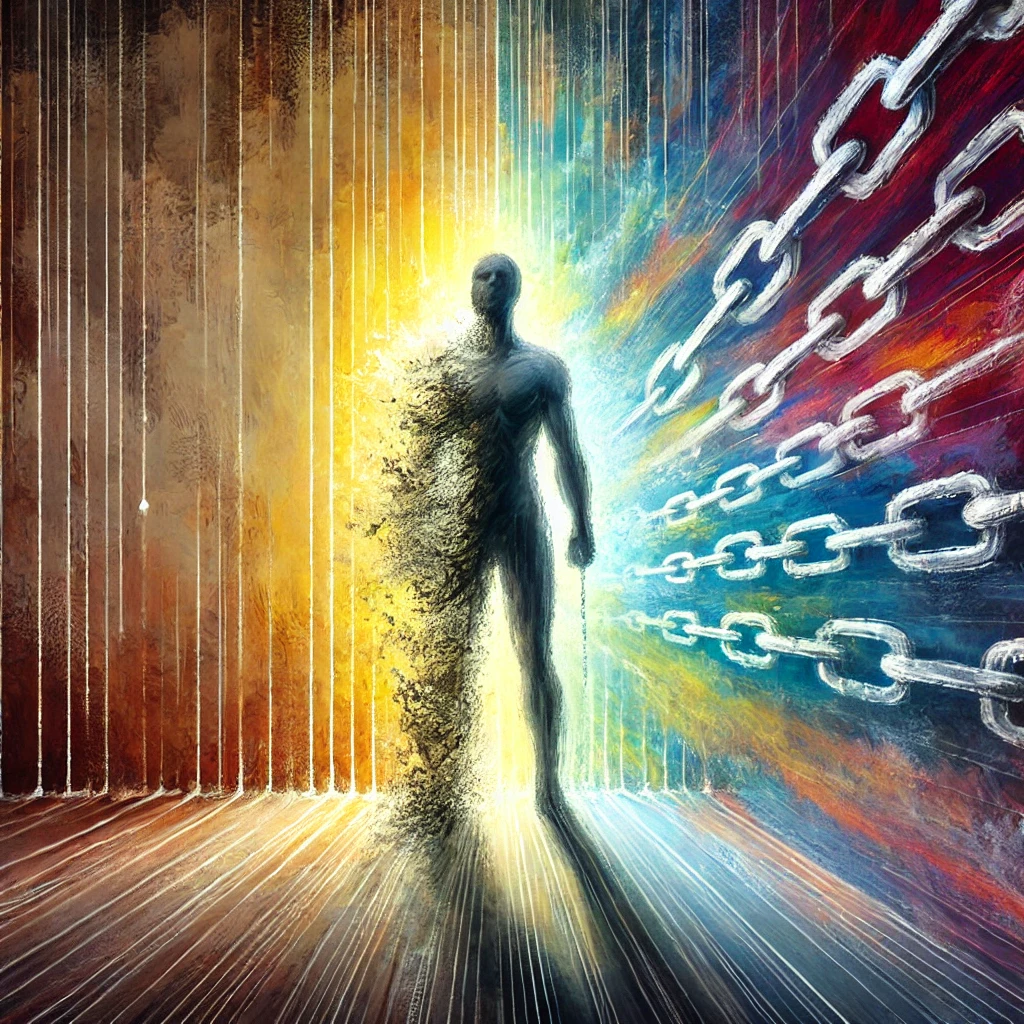Student:
You said that I will always ever only act like the person I believe myself to be, no commitment to act in a certain way is required or even of use. Where does this belief come from?
Teacher:
This belief arises from the nature of the mind. The human being operates from a foundation of identity. Who you believe yourself to be becomes the filter through which every action, decision, and behavior flows. You do not act in a vacuum. You act in alignment with the narrative you have constructed about yourself.
A commitment to act in a certain way is artificial. It is a forced construct that exists in opposition to your natural tendencies. It is like planting a flower in infertile soil—it does not take root. This is why resolutions fail, and self-discipline cracks under the weight of reality.
If you wish to alter your actions, you must alter your belief about who you are. For actions do not arise from a vacuum—they arise from identity. And identity arises from belief. Thus, to act differently, you must see yourself differently.
No commitment is required. What is required is clarity.
Student:
I know that there is no how but how do I see myself differently?
Teacher:
You do not “do” it. You see it.
The mind is addicted to the notion of “how.” It seeks methods and practices to fix what it perceives as broken. But transformation does not arise from practice. It arises from understanding.
To see yourself differently, you must see the falseness of who you currently believe yourself to be. That belief—your identity—is a story. It was not chosen by you. It was given to you by parents, society, culture, and conditioning. And because it is borrowed, it is false.
The moment you begin to see that this identity is an illusion, cracks will form in its foundation. When you stop clinging to this constructed self, the truth of who you are has the space to emerge. But you cannot manufacture this. It is not a technique. It is not a process.
It is a matter of looking. Relentlessly. Ruthlessly. Asking yourself:
- Who am I without the story?
- Who am I without the labels?
Not to arrive at answers. But to strip away the layers of falseness. Until there is nothing left but what is real.
Student:
Ok, but let us look at an example. At work, I take too much from my superiors, do not push back, do not ask for more, do not stand up for me. What sort of belief underlies this and what sort of lie of who I believe myself to be is at its core?
Teacher:
The belief underlying this behavior is likely rooted in fear, insecurity, or a sense of inadequacy. At its core, it reflects the lie that you are lesser. That you are not worthy of asserting yourself. That to challenge or push back risks rejection, punishment, or loss.
This is the identity you are operating from:
- Perhaps you see yourself as someone who must please others to be safe.
- Perhaps you believe you are powerless in the face of authority.
- Perhaps you see yourself as someone whose value is conditional on submission or silence.
These beliefs are inherited. They may stem from childhood experiences, societal conditioning, or years of habitual reinforcement. But they are lies.
What would it mean to see through these lies? It would mean to recognize that:
- You are not small. The “smallness” you feel is a shadow cast by your mind. It is not real.
- Your value is not dictated by others. You believe their approval keeps you safe, but this is an illusion. Safety comes not from submission but from seeing your worth as intrinsic.
- There is no superior or inferior. The hierarchy you perceive is a construct. It exists only in your mind.
To stand up for yourself does not require “bravery.” It requires seeing the falseness of the fear. Seeing that what you fear losing is already not yours—it is an illusion.
You do not need permission to exist. You do not need validation to assert yourself. The lie is that you ever did.
